The choice of coffee as a profitable and successful investment also had a long maturation. We analyzed cocoa, rubber, ornamental flowers, biodiesel… thenwe finallycame to the conclusion that the coffee would be best suited to our environment, for the following reasons:
- Enabling environment: with 1800-2400 mm of rain annually, fairly well scattered throughout the year, the weather pattern indicated to be a favorable environment to certain species of coffee, mainly theconilon strain (Robusta)
- Topography: with the slopes of the first hills of the continental shelf, East-facing good fertile soil, several perennial streams and small lakes, high top-soil (>1m)
- Positive experience in nearby farms: on the South the coast of Dendê coast, on the outskirts of Valencia, 20 Km from the farm Peralba, the coffee has been grown extensively for hundreds of yearsManpower: with the proximity of other coffee plantations, it would be easy to find workforce with appropriate experience
- Attractive returns: a good coffee farm produces from 25 to 40 bags of green coffee per year; reaching the same goals, a return of 30% demonstrated a small, but viable and attractive businessBuyer’s market: the four toasters operating in the area of Santo Antonio assured us that they would buy all our production with ease, at ‘normal ‘ market prices
- Availability of funding: the Development Bank in Bahia have attractive credit lines to finance an investment of coffee
- So… in 2008 we entered the coffee production.
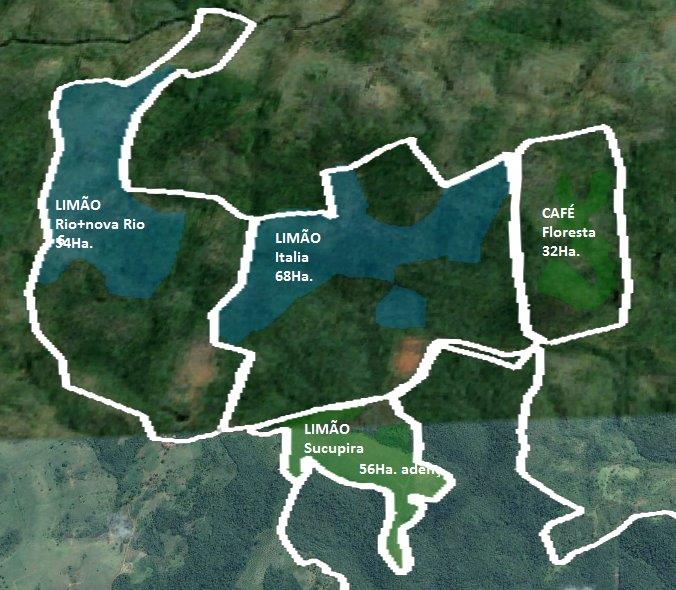
First, we had to decide where to plant.
The farm is relatively large and contains several appropriate places. Finally, we decided that it should be close to home headquarters and away from the limes plantationsso that no cross-contamination occurswith any pesticide or product carried by the wind. To ensure that our decisions were correct, the appropriate terrain (and countless other factors unknown by us at the time) we hired Dr. José Matiello, considered the highest coffee authority in Brazil. He guided us in the construction of nurseries (22 hectares he suggested a hotbed of 150,000 seeds), in the location of the sectors, in the design of the shed and dryers, on the machines … and millions other details.
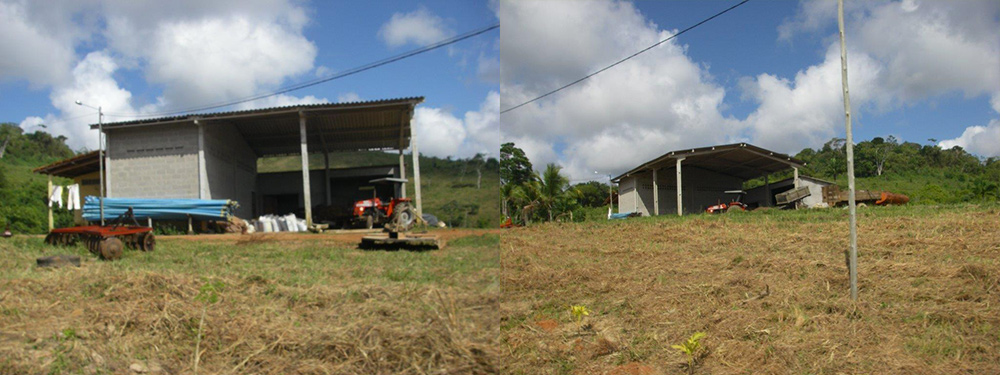
… and we cared for it …
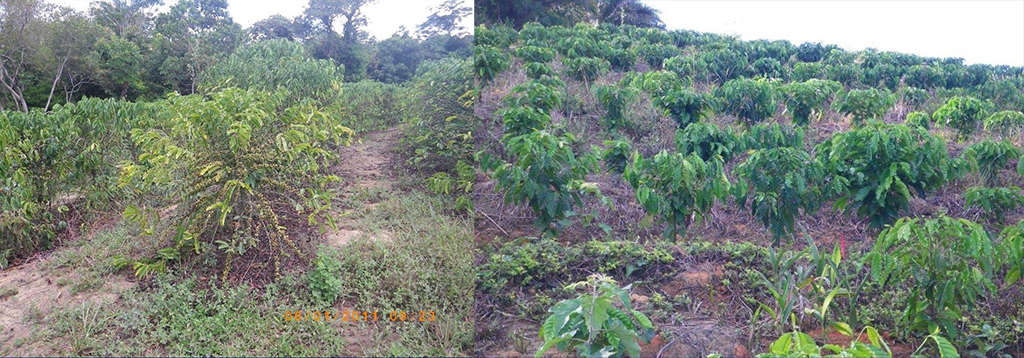
… and grow …

We became overwhelmed!!

… by the end of 2011 the coffee became a beautiful plantation!
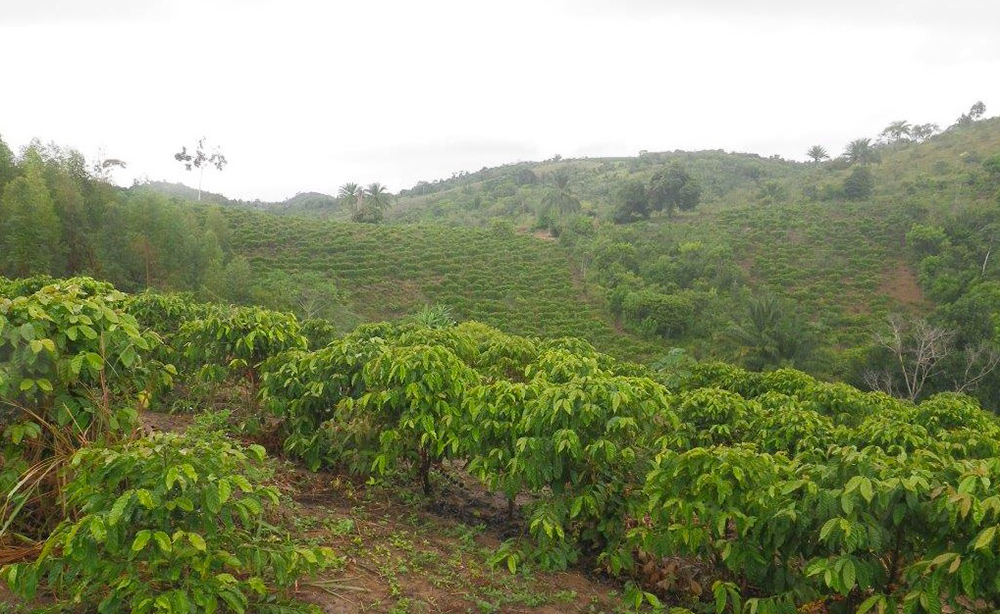
… and they flowered intensely…

… and then in our newly designed kilns, fired by the eucalyptus we planted…

… to first dry in the sun…
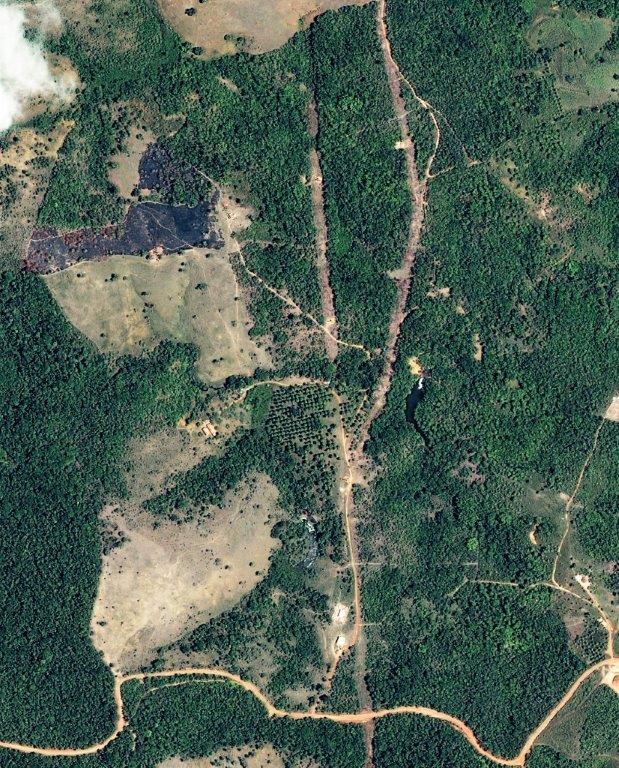
All this in 2008 and with our own resources. As soon as the project was approved by the Bank, in 2009 we started the nursery and planted during the rainy months of that year.
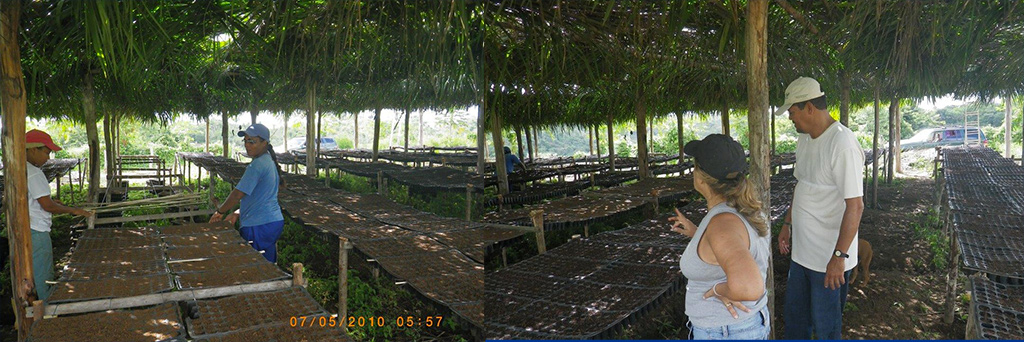
In July 2009 all of the seedlings were in the ground!
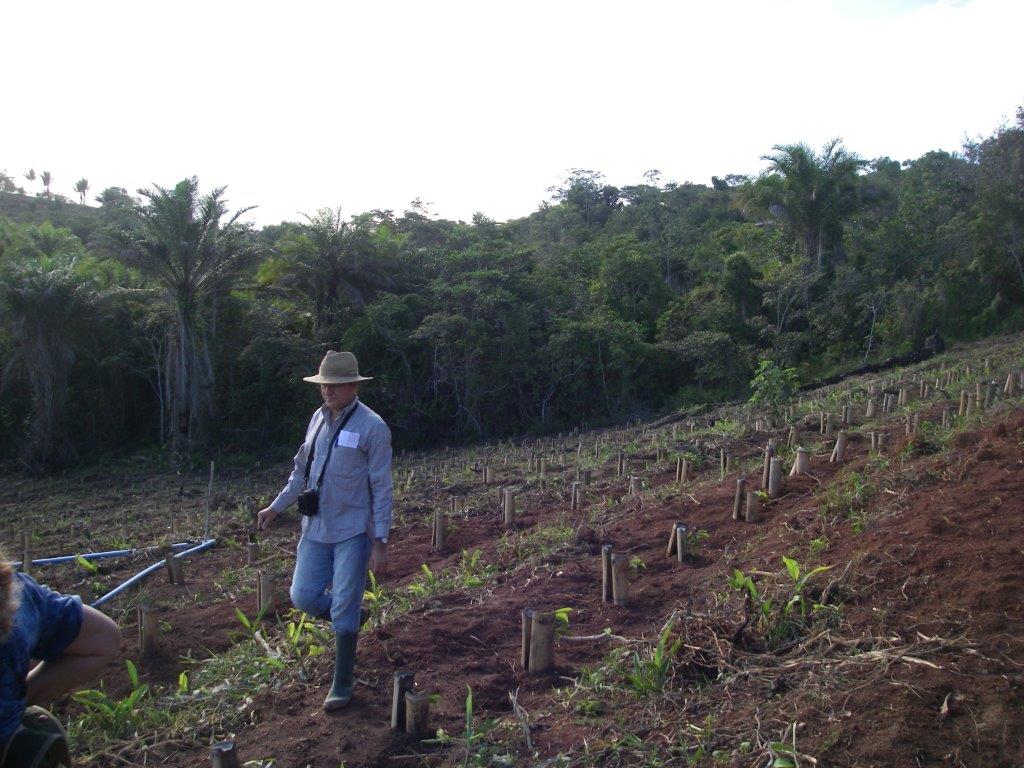
… and one year later, results started to show!!!…

Immediately we prepared the new nursery for 2011, this time with 280,000 seedlings for 34 acres. And we used a technique absolutely new for this type of culture: insemination in tubes. So, we were able to focus on a much larger number of seedlings inthe same nursery space (larger irrigation controls, less manpower, monitoring of growth and fertilization) and, more importantly, we were able to plant them with greater ease and rapidity. We lost 3% of seedlings and we ended up selling the remainder to neighboring farmers. It was a beautiful design!
What put them in the ground… and we cared for them…

… and sprouted a multitude of fruit of the Conilon gene …
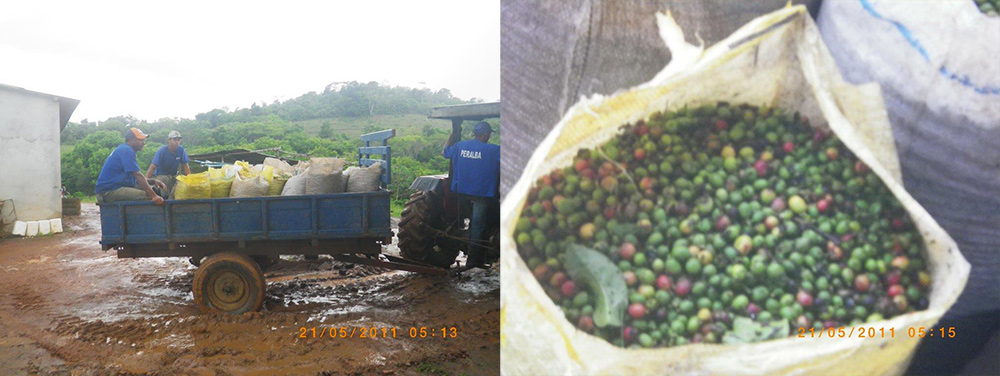
… while truck loads reached the processing facilities…
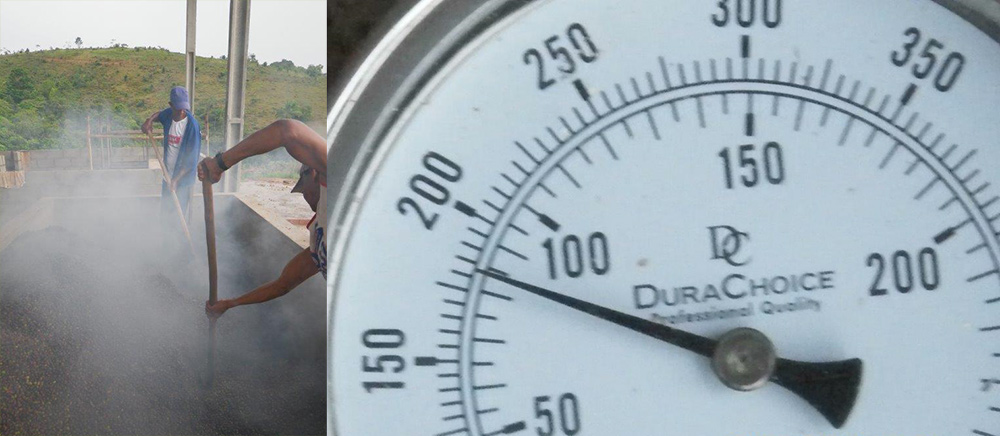
… that dried the coffee cherries at 80 centigrade…
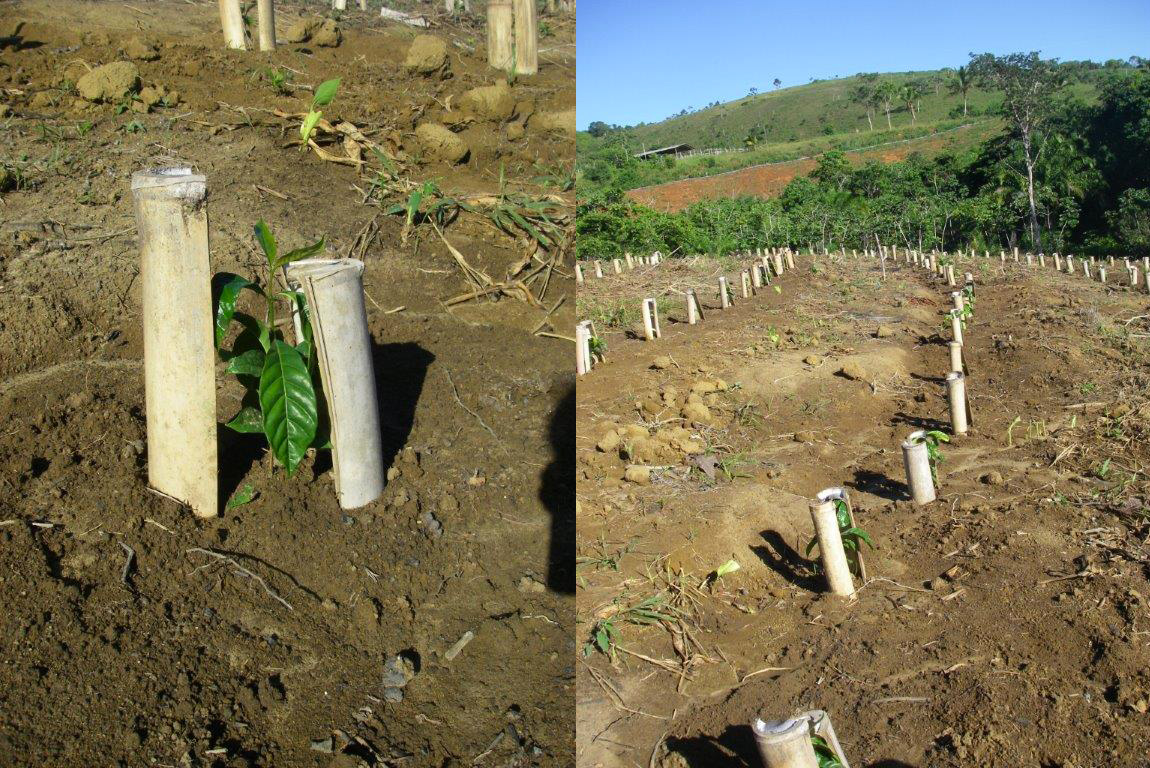
all protected by the nearby virgin forest
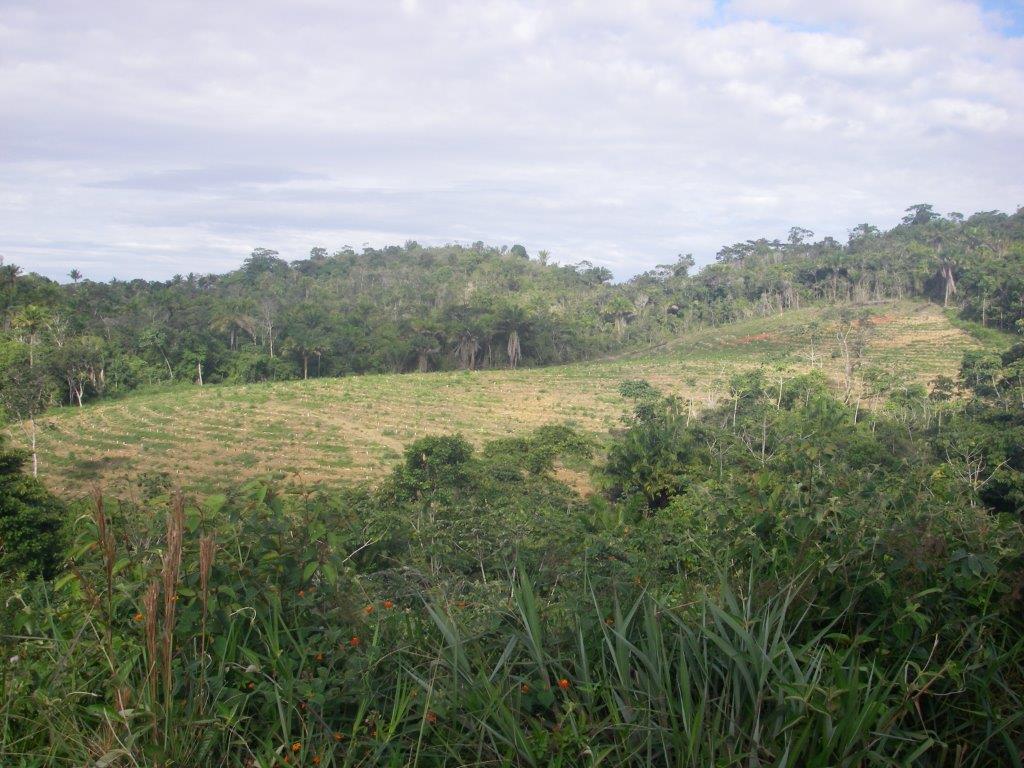
We had many losses, almost 10%. Although it was expected, it left us a bit sad, but soon the flowering that came instigated us to move on quickly.
Anyway, we had learned a lot: next year we would have almost no losses. We moved quickly to build the shed, the workshop and all facilities as the crop in 2011 loomed huge!
We cared for the new plantation…

… full of cherries!!!
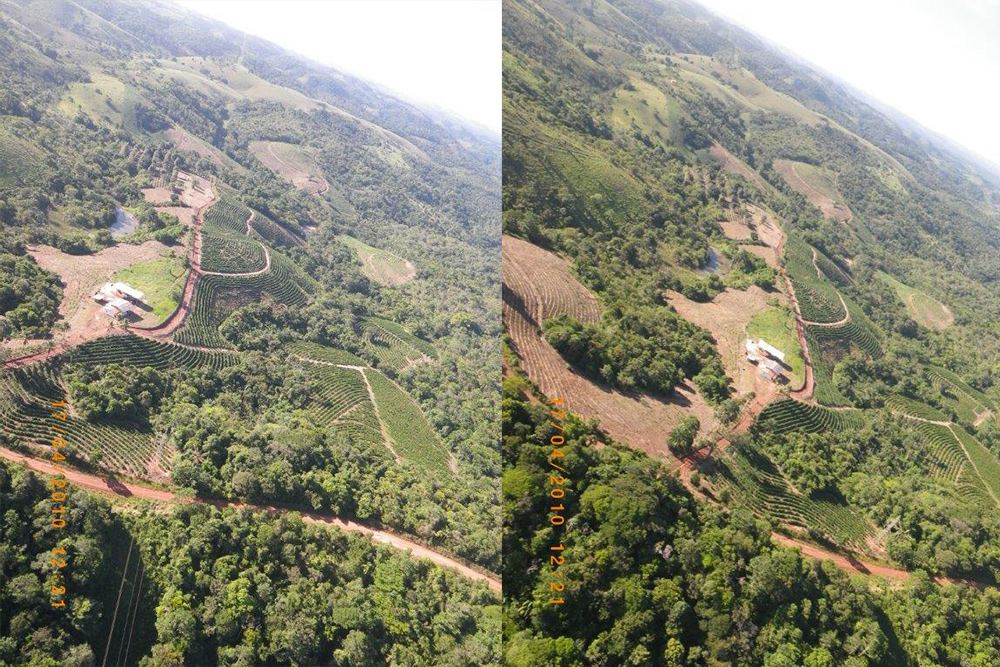
It gives you pride, does it not??
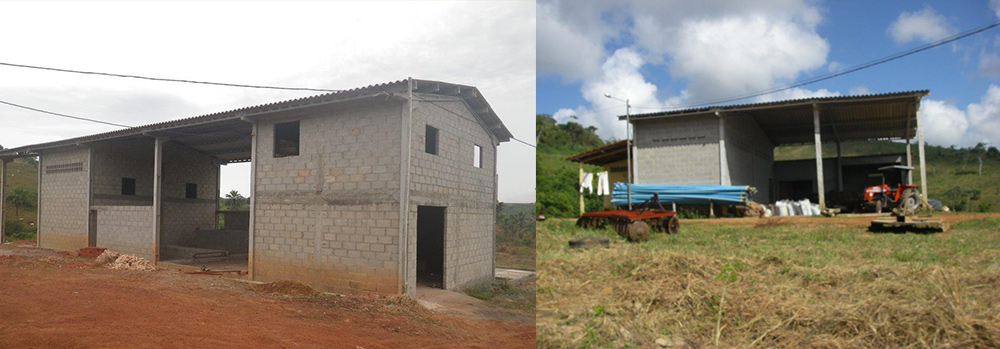
And up went the processing infrastructure! In the meantime, the plants never stopped to grow! … and grow …
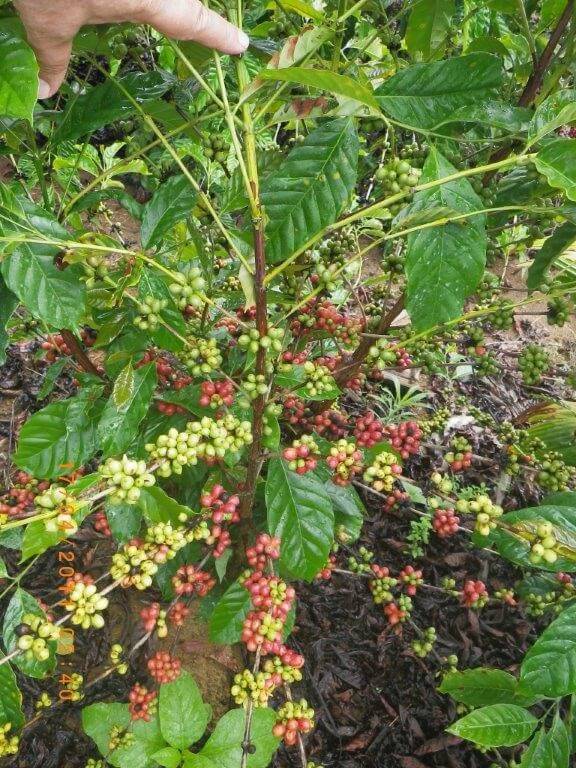
… and harvesting was immense, grandiose, amazing…
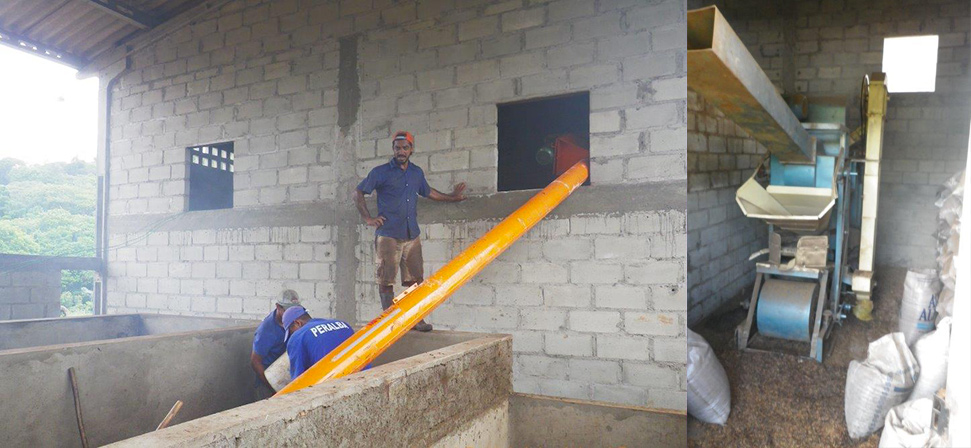
… to be removed when they reached 12% of humidity and stored in a waiting stock shelter…
… with its dry hard shell to protect the beans from deteriorating. Then moved to our machine…
… to be deshelled and packed for shipment!!.
 All this for one grain of coffee!!
All this for one grain of coffee!!
But as always, good things come to an end.
In 2012, the drought stepped in … el Niñoe … and it was bad.
We tried to save what we could by using the water from our two dams. We installed several pumps and almost 10 km of pipes, but it soon became clear that el Nino would not stop, and that the costs of maintaining the plantation in such conditions would be highly unprofitable.
We had to stop watering and we lost 20 hectares.
The rains returned.
2013-14 was a good year. The coffee plants recovered almost completely. Walking among the plants, we realized how tough the two years were that we suffered, but with all this delay of three years, the pruning process was vital to maintain the vitality of the plantation.
This means that we will have 40% to 50% of production in 2016, but in 2017 will become to produce between 50 and 60 bags per hectare.
Is fighting mad, as they say in these parts of the world, but that fight was beautiful!! And it is!
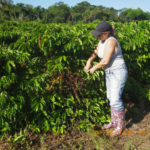

.jpg)
.jpg)
.jpg)
.jpg)
.jpg)
.jpg)
.jpg)
.jpg)
.jpg)
.jpg)
.jpg)
.jpg)
.jpg)
.jpg)
.jpg)
.jpg)
.jpg)
.jpg)
.jpg)
.jpg)